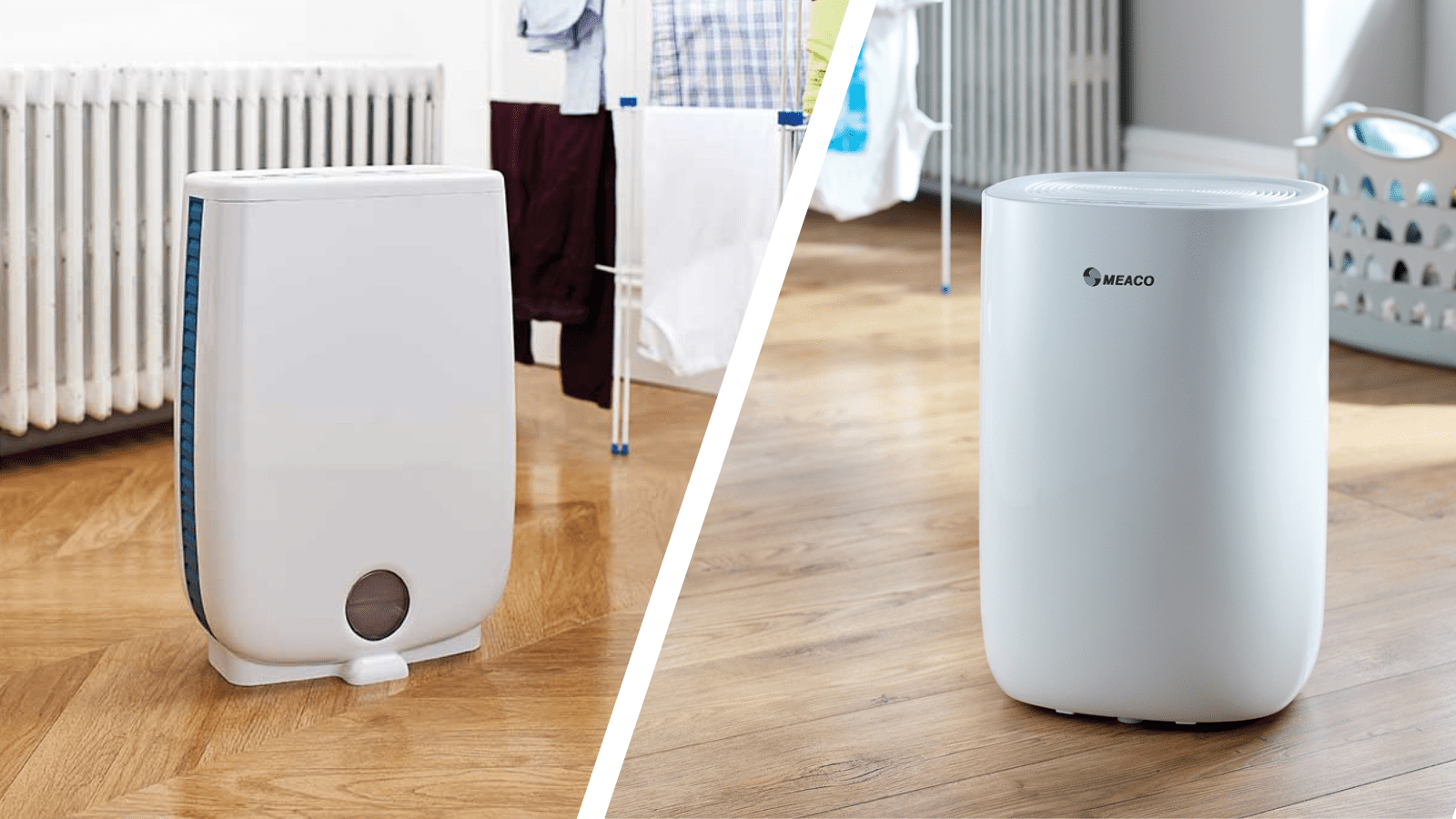
Selecting the right dehumidifier is a minefield for many people as brands send out conflicting information trying to persuade consumers to buy. Do you need a desiccant dehumidifier or a compressor model? Our sales are fairly even between the two technologies which puts us in an unique situation to provide unbiased advice.
There are two types of dehumidifiers: desiccant and compressor. At Meaco, we manufacture and sell an equal amount of both types of technologies, so we are uniquely placed to give unbiased advice on which would be best for your needs. Both types of appliance will help prevent mould and damp by extracting water.
Because there are two different types of dehumidifier technology on the market, confusion comes when someone has to decide which one to buy. Below is a cut-and-keep guide to making the right choice.
Generally speaking, a compressor dehumidifier is suitable for a room with an air temperature above 10°C, and a desiccant dehumidifier is more suited for temperatures below 10°C.
So, there are 6 key factors which may help you decide whether a desiccant or compressor dehumidifier suits you best:
- What is the temperature of the space you want to use your dehumidifier?
- Will a dehumidifier keep the room warm and dry?
- Can a dehumidifier dry laundry?
- How much does a dehumidifier weigh and how easy is it to move around?
- How much does a dehumidifier cost to run?
- And how much noise does a dehumidifier generate?
Compressor dehumidifiers are the established way of doing things having been around for 50+ years. They work by creating a cold surface and when the warm, damp air from within the room comes into contact with the cold surface, condensation forms, and the water is removed from the air. Jump to the comparison table.
A desiccant dehumidifier has no compressor and does not use a cold surface to extract the excess moisture from the air. Instead, it has a desiccant wheel that absorbs the moisture from the air, in a similar way to a sponge. The desiccant is regenerated by an internal heater and fan so that the process can be repeated time and time again. Jump to the comparison table.
Main applications to consider when choosing between dehumidifier types:
Which type of dehumidifier is best for cold or cooler conditions (temperature is below 10°C)? When the room air temperature is likely to fall below 10°C, for example in a conservatory, garage or colder home, a desiccant dehumidifier is the most suitable type. This is because, desiccant dehumidifiers maintain a consistent performance, regardless of the surrounding temperature.
Compressor dehumidifiers, on the other hand, need the inside of the machine to be colder than the air within the room in order for it to perform correctly. So, the colder the room, the harder the dehumidifier has to work to create that cold surface. As the temperature starts to fall down towards 10°C, the chances are that the inside of the dehumidifier will get close to freezing, increasing the chances of ice forming on the dehumidifier’s cooling coils. Below 10°C, compressor dehumidifiers are programmed to spend more and more of their time defrosting themselves rather than dehumidifying.


Pictured: Desiccant dehumidifiers are recommended for cold rooms although the MeacoDry Arete® One compressor dehumidifier also works well.
As a rule of thumb we would always recommend a desiccant dehumidifier if the room temperature is below 10°C, a desiccant dehumidifier or a large compressor dehumidifier (either a 20L or 25L) if the room temperature is between 10°C and 15°C and any type of dehumidifier, including a small compressor dehumidifier (10L or 12L), if the room temperature is above 15°C.
Below 10°C: desiccant dehumidifier only
Between 10°C and 15°C: desiccant dehumidifier or a large compressor dehumidifier (20L or 25L)
Above 15°C: desiccant dehumidifier or any size compressor dehumidifier (10L, 12L, 20L or 25L)
Small compressor dehumidifiers used in rooms below 15°C and large compressor dehumidifiers used in rooms below 10°C will not perform well. Having said that, you will see that both of the larger MeacoDry Arete® One dehumidifiers are Which? Best Buys and in their reviews found that they both performed better than expected at 10°C and that the 25L model was exceptional. Desiccant dehumidifiers (such as the Meaco DD8L) will perform the same regardless of the room temperature.
Desiccant dehumidifiers are recommended for cold rooms although the Arete® One 20L and 25L compressor dehumidifiers also work well, as you can see here in the classic car garage.
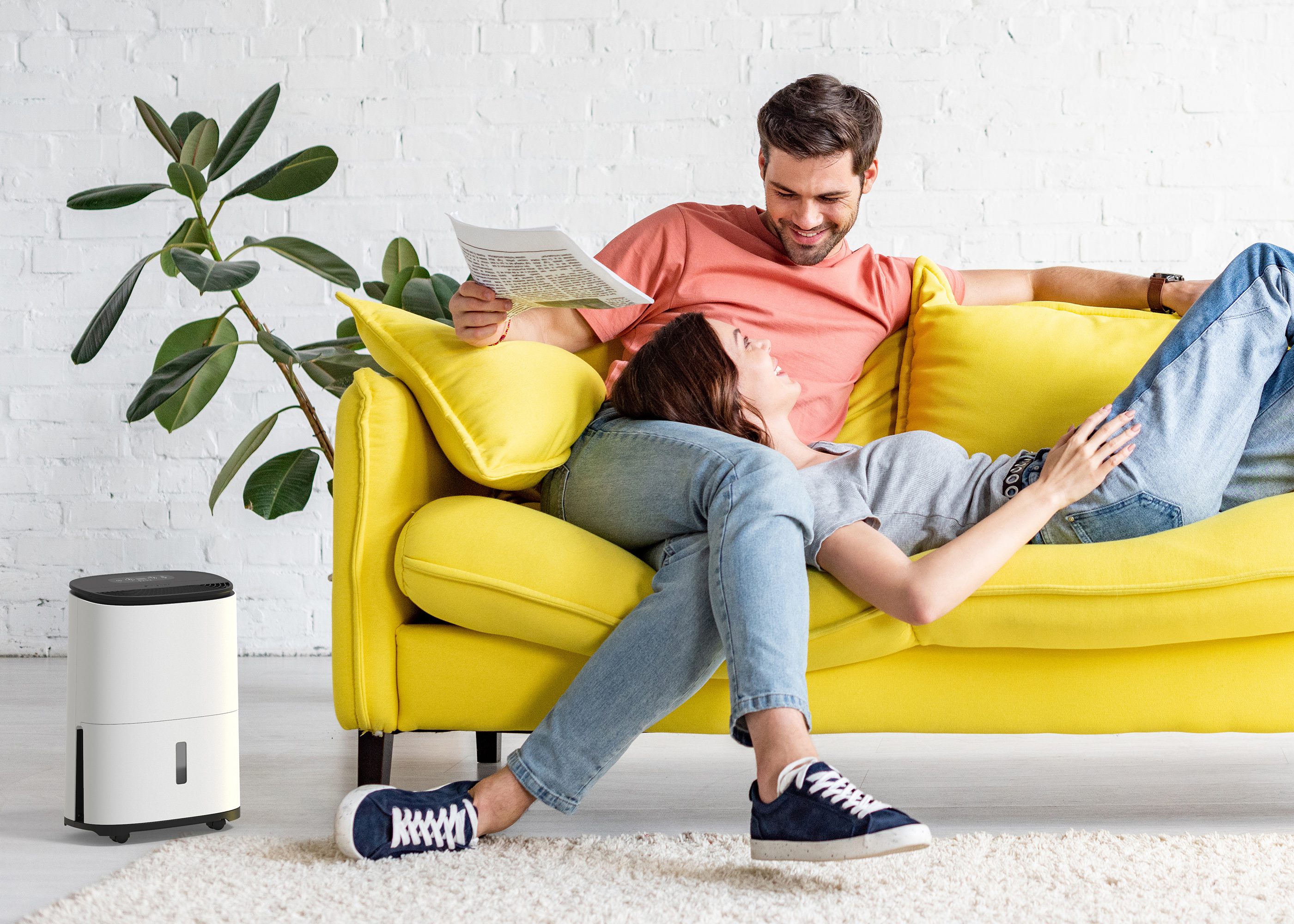

Which type of dehumidifier is best to keep your house warm and dry?
Most customers are looking for a dehumidifier to keep their home condensation free. Or to tackle the problem of too much humidity in the air causing damp and mould. They need a dehumidifier that will take excess moisture out of the air, and some also like it to warm up the room where it’s operating.
Both compressor and desiccant dehumidifiers will warm the air up slightly – the air naturally warms up as it passes through the dehumidifier. The air coming out of the compressor dehumidifier will be about 2°C warmer. This will not warm up the room the dehumidifier is being used in (and will actually feel cold to touch! This is because the air is moving). However,the air coming out of a desiccant dehumidifier will be about 10-12°C warmer and will have a significant impact on the temperature of the room its being used in – think of it as a 2 in 1 dehumidifier and heater!
So, if you are putting the dehumidifier into a hallway that is on the chilly side, the desiccant dehumidifier makes sense. If the hallway is already nice and toasty then the compressor dehumidifier is the correct option.
So, for a cold room – the winner is desiccant. For a warm room – the winner is compressor.
Is a desiccant dehumidifier good for drying laundry?
Drying washing indoors is one of the most common reasons why homes suffer from condensation, damp and mould. Laundry dries because the air around it is drier than itself. So the washing gives up the moisture in order to be in equilibrium with its surroundings. However, the moisture from the laundry has to go somewhere and this leads to condensation, damp and mould. Using a dehumidifier not only creates a dry atmosphere and blows air across the wet washing speeding up its drying time, it also captures the excess moisture from the clothes and prevents it from causing problems in your house such as condensation, damp or mould.
Drying washing using a dehumidifier works in the same way as drying the laundry on a line in the summer – honest! The laundry dries fastest outside on a dry, warm, windy day. And the laundry inside will dry faster if the warm, dry air created by the dehumidifier hits the clothes.
Both desiccant and compressor dehumidifiers are good at drying laundry. A desiccant dehumidifier tends to have a larger top speed air flow than a compressor dehumidifier and the air coming out of the dehumidifier is warmer (giving it that extra edge).
The DD8L Zambezi has a unique low energy drying cycle for laundry which makes it the best desiccant for drying laundry, as well as a lourve which directs the airflow onto the clothes. Although compressor dehumidifiers don’t have the additional heat they are cheaper to run and therefore can dry a load of laundry at less of a cost than a desiccant. Many compress dehumidifiers, including our MeacoDry Arete® One range, have dedicated laundry modes to dry your laundry in 6 hours.
For drying washing, the winners are the DD8L Zambezi and for low cost drying the MeacoDry Arete® One range.
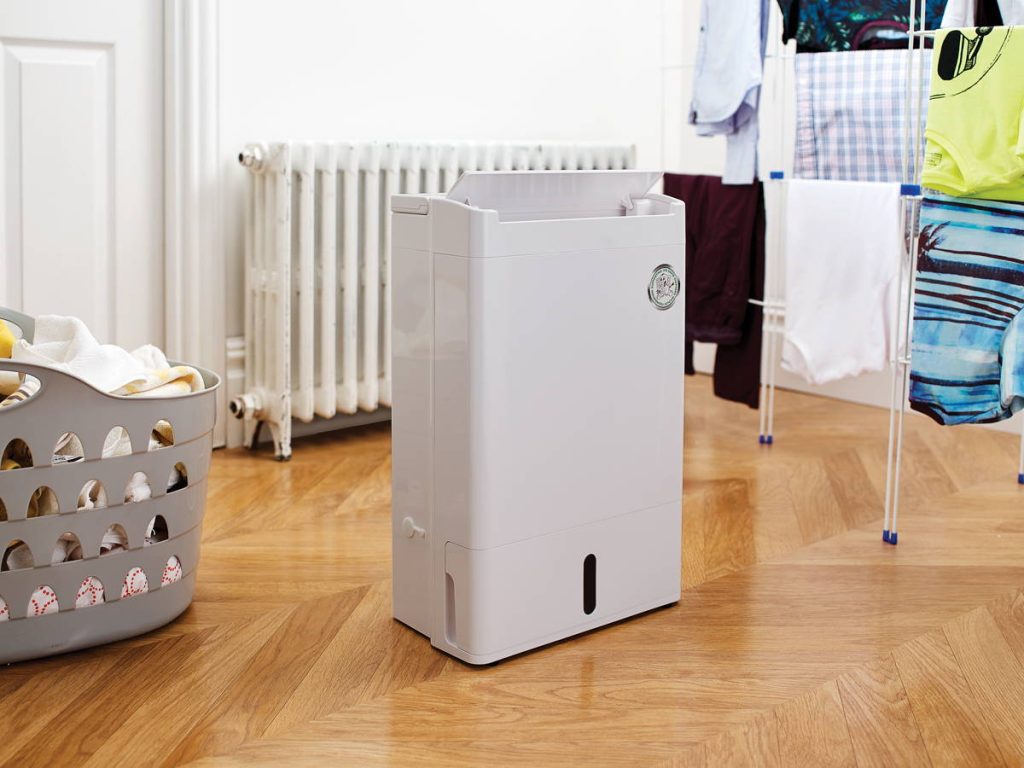

Pictured: Desiccant dehumidifiers can be used to dry washing cost-effectively.
Product features to consider before purchasing:
Planning on moving the dehumidifier around the house? You’ll need to know which weighs less, a desiccant or compressor dehumidifier.
However, there may be times when you want to move the dehumidifier around. For example, you might have built-in wardrobes in a bedroom that are prone to mould growth. You might have the dehumidifier upstairs on the landing but need to move it downstairs to dry the washing, or you might like to move it into a conservatory now and again or use it to dry out a poorly ventilated bathroom.
Compressors add about 6 kilograms to the weight of a dehumidifier, so carrying a desiccant dehumidifier around is a lot easier than carrying a compressor dehumidifier around. However, most compressor dehumidifiers come with castors, making them more portable.
Carrying your dehumidifier – the winner is desiccant.
Energy Consumption – how much does a dehumidifier cost to run?
Customers are understandably interested in how much it costs to run a dehumidifier. Compressor dehumidifiers are in general cheaper to run. However, a desiccant releases its extra energy as heat. So there will be a cost to run your dehumidifier, but you are getting heat back into your home, meaning you can reduce your central heating accordingly. And that has a positive knock-on effect on your bills. You have to decide if you want or need this additional warmth or if you just want the cheapest dehumidifier to run.
For example, in our compressor range, we have the Meaco Low Energy 12L Dehumidifier, running at just 4p / kWh as well as our MeacoDry ABC 12L, running at just 4p / hour based on 27.35p / kWh. That means, you can have the dehumidifier on 24 hours a day, maintaining your home humidity levels for just 96p per day.
So, for low energy and low cost operation – the winner is compressor dehumidifiers.
The good thing is, whichever dehumidifier you choose, a compressor or a desiccant, the dehumidifier will be removing cold, damp air from your home, meaning you don’t have to put your heating on as high – saving you money on your energy bills!
Noise levels – how much noise does a dehumidifier make?
This is an area where dehumidifiers have changed a lot over the past 5-10 years. It used to be the case that a desiccant dehumidifier on low fan speed was your quietest option, but a few years ago the MeacoDry ABC Range changed all of that with 10 and 12l models at just 36dB (close to the sound of a whisper). And then, we changed it again with the new Arete® One 10 and 12L compressor dehumidifiers which are even quieter at 35dB. So you can now buy a dehumidifier that is the quietest and cheapest to run.
For quiet operation, the winner is Meaco ABC 10L and 12L and MeacoDry Arete® One 10 and 12L Dehumidifier and Air Purifier. These dehumidifiers are all a whisper-quiet 35/36dB.
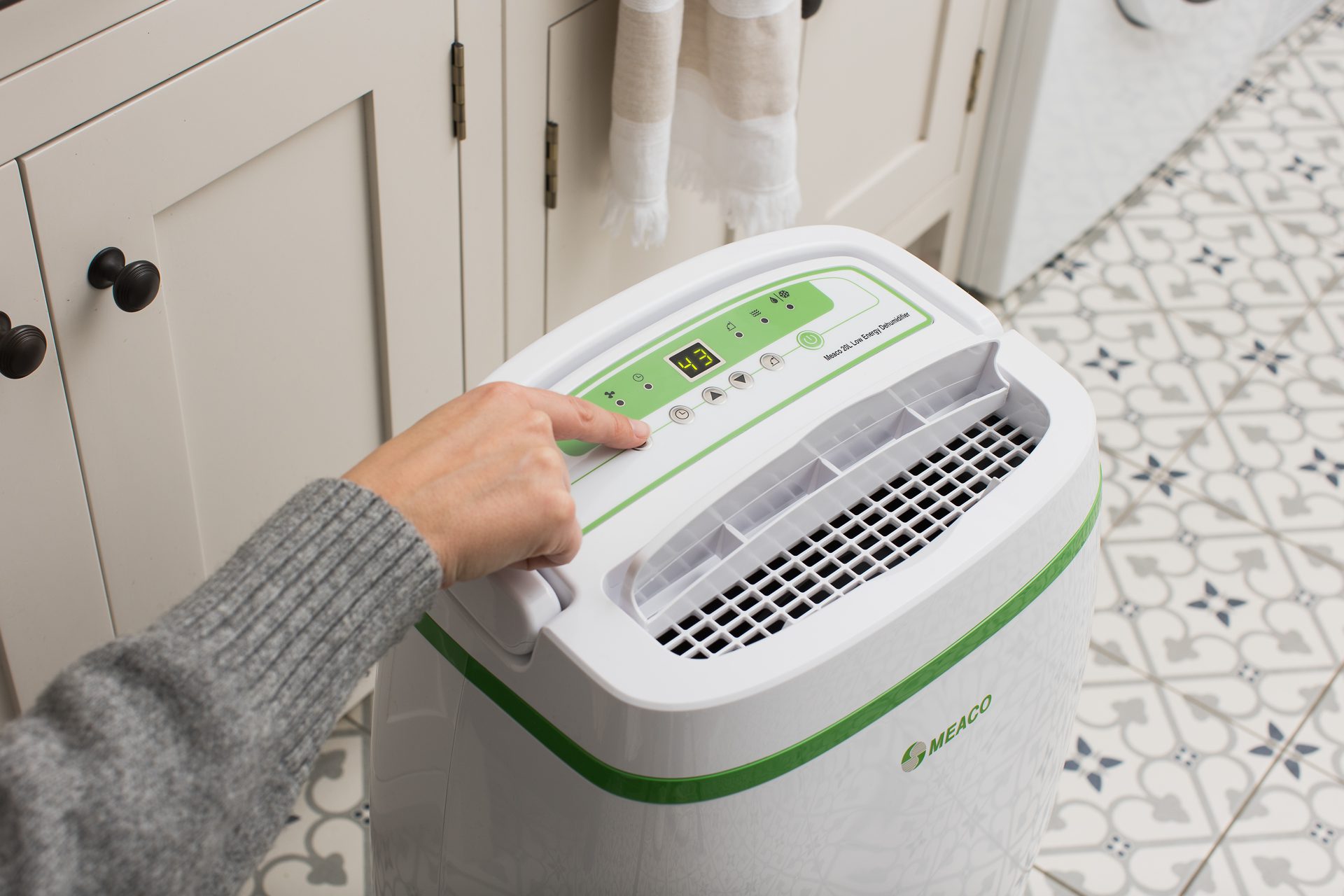

Which Dehumidifiers Can Do More Than Just Extract Moisture, Which Can Double Up As An Air Purifier As Well?
Many dehumidifiers can now be fitted with HEPA filters so they can purify the intake air as well as extracting moisture. At Meaco, we supply medical-grade H13 HEPA filters to selected compressor dehumidifiers. These can retain 99.75% particles as small as 0.3 micrometers in diameter, making it great for people with allergies like hayfever or other respiratory medical conditions such as asthma.
Because of the heat elements and sensitive parts of a desiccant dehumidifier, we do not supply things like HEPA filters. By putting anything which reduces the air intake onto the dehumidifier, we’re reducing its efficiency and can harm the machine. Equally, if things like sawdust from a garage/workshop got into the mechanics, you could be serving a short life sentence for your dehumidifier.
However, compressor dehumidifiers like the MeacoDry Arete® One and Meaco Low Energy range, are supplied with a H13 HEPA filter. It can be easily inserted into the dehumidifier turning it into a combined dehumidifier and air purifier. You can use this as much or as little as you want – the filter doesn’t have to be in the unit all the time, however when it is, the air in your home is being purified of dust, dirt, allergens, mould spores and VOCs! It’s important HEPA filters are replaced when they change colour from white to dark grey, this tends to be around every 3 months.


Let’s summarise the desiccants vs compressor dehumidifier debate, each is useful in different applications:
Desiccant
Compressor
Effective in which temperatures:
Desiccant:
Works well in all temperatures and are the recommend dehumidifier below 10°C
Compressor:
Only effective in spaces over 10°C, performs best at 16°C and above
Does it provide heat to the room?
Desiccant:
Yes, desiccants emit some additional warmth which can be useful
Compressor:
No, this does not provide additional heat
Are they effective when drying washing?
Desiccant:
Yes, actually optimal as they extract moisture and add warmth to drying laundry
Compressor:
Yes, these will successfully help you to dry washing indoors
Laundry mode available?
Desiccant:
Most Meaco dehumidifiers come with Laundry Modes. Check the technical specifications for more information.
Compressor:
Most Meaco dehumidifiers come with Laundry Modes. Check the technical specifications for more information.
Which is lighter in weight?
Desiccant:
Lightest and therefore easiest to move
Compressor:
The equivalent sized compressor dehumidifier will weigh an additional 6kg, however lots come with castors
Which has a cheaper cost to run?
Desiccant:
Desiccants are more expensive to run, our MeacoDry DD8L costs 9p / kWh
Compressor:
Compressors are cheaper as a general rule. Our MeacoDry Arete® One 10L costs just 4p / kWh
Which dehumidifier uses less electricity?
Desiccant:
Around 330 watts at 20°C and 60%rh
Compressor:
Between 150-260 watts depending on the size at 20°C and 60%rh
Which generates the lowest noise levels?
Desiccant:
Traditionally quieter, the 8L desiccants in our range are 39 dB
Compressor:
The latest ABC and Arete® dehumidifiers are Quiet Mark accredited, measuring 35dB and above.
Which has the longest lifespan?
Desiccant:
Lifespan is dependent on a lot of factors including the environment and how well the dehumidifier is looked after
Compressor:
Lifespan is dependent on a lot of factors including the environment and how well the compressor is looked after, however, our Arete® range is the only range to come with a free 5 year warranty
Which has the best sizing options?
Desiccant:
Because of the mechanics, desiccants only come in 8L however this is suitable from a 1 bed flat to a 5 bed house
Compressor:
Multiple sizes available for different sized houses
Which can clean the air as well as dehumidify?
Desiccant:
Dehumidify only
Compressor:
Our MeacoDry Arete® One and Meaco Low Energy range are combined dehumidifiers and air purifiers
Best application
Desiccant:
Lower temperatures or places you may want some extra warmth. For example, an unheated conservatory.
Compressor:
Applications over 10C. These are cheaper to run and available in more sizes. Great for home living.
You can see that it is not as simple as many dehumidifier brands make out when they claim that a desiccant dehumidifier – or a compressor dehumidifier is best. This is because they are normally biased towards one or other of the technologies. Hopefully the above will help – but if you are still not sure what’s best for you, give us a call on 01483 234900, email customerservice@meaco.com or comment below and we will be happy to talk it through with you.
Browse our ranges: Compressor Dehumidifiers, Desiccant Dehumidifiers
Products featured: Meaco ABC 12L , Arete® One 10 and 12L Dehumidifier and Air Purifier, Meaco DD8L, Meaco DD8L Zambezi, Meaco Low Energy Dehumidifier 12L

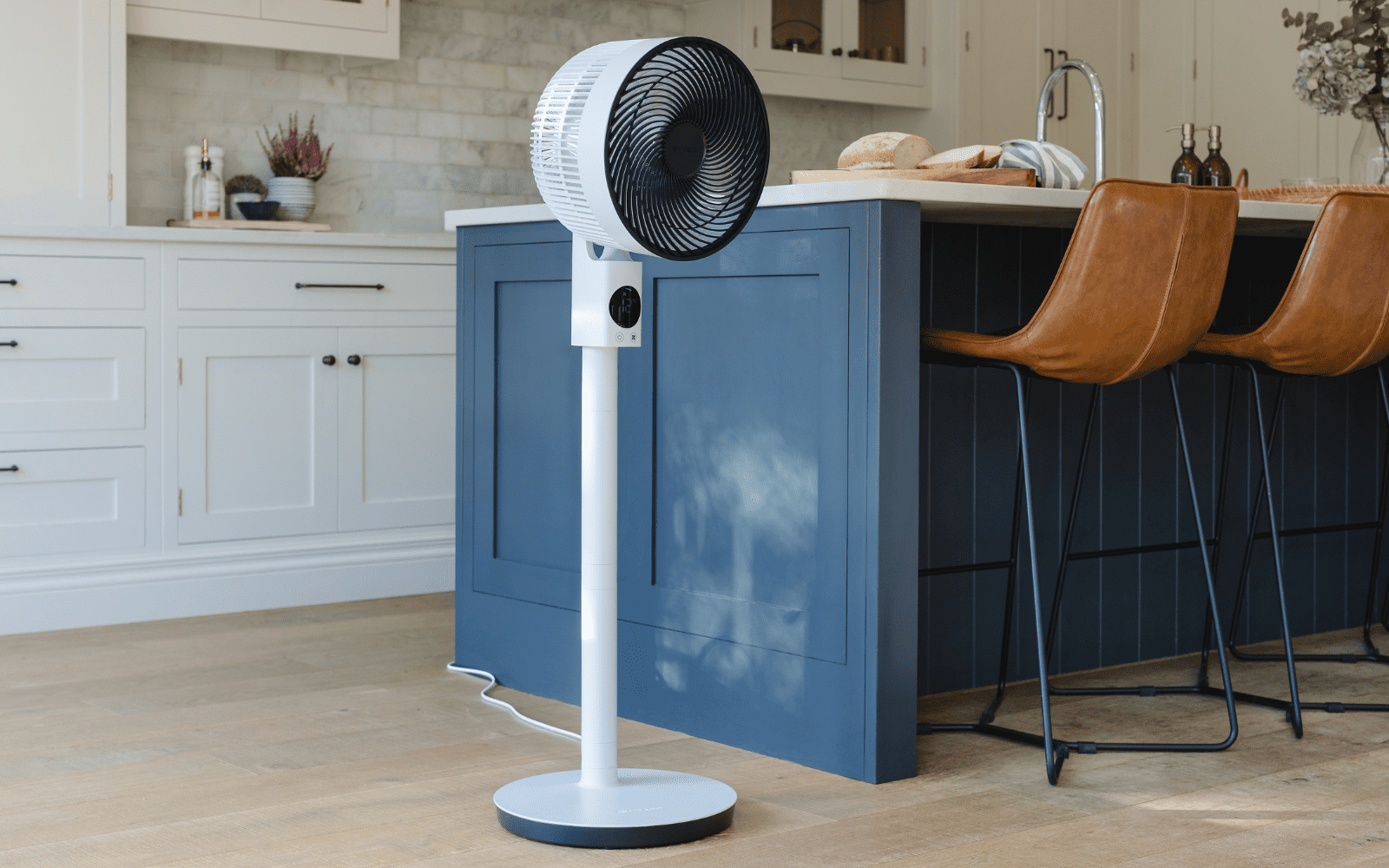


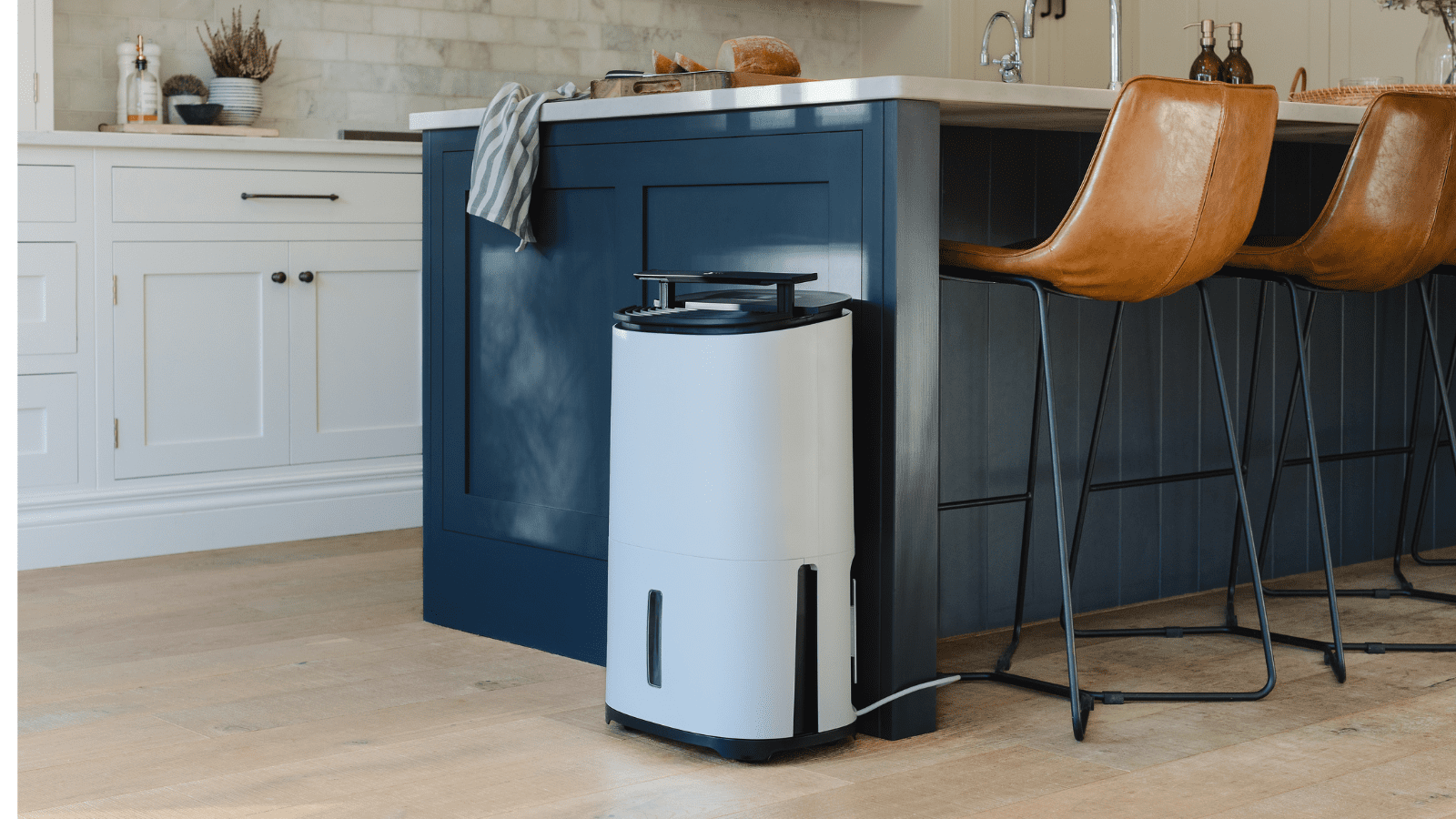


229 Responses
Hi Chris.
Looking at getting a dehumidifier as have noticed bathroom window ledge and ceiling and bottom wall near waste pipe starts developing wet damp spots and condensation in morning. Got trickle vents open but still notice water forming got extractor fan but only use when showering then leave on for 5 mins and turn off. Which model do you recommend. Thinking of placing outside bathroom on landing to capture moist from entire house. 2 bedroom home. Although that landing seems coldest as no heater and near window. Just not sure if I should be getting compressor or descicant. Humidity around 70%.
Chan,
I wouild run the extractors for a lot longer and buy a 12L model if there are 3 or less of you in the house or a 20L for 4 or more people or 3 or more people plus laundry drying indoors.
Hi, I have condensation problems in my loft which is a non converted space. The condensation is dripping onto the loft insulation. Would you recommend the Inventor Rise 8 litre desiccant dehumidifier with Ioniser or another product? Or is it not appropriate to use a dehumidifier in a non converted loft?
I would not recommend a competitors product (!), and I would not recommend a dehumidifier in a loft. What you need is better insulation up there.
This website has lots of good advice on the loft issue – https://www.petercox.com/our-services/condensation/loft/#:~:text=Insulation%20causing%20condensation%20in%20the%20loft&text=Condensation%20in%20lofts%20occurs%20when,the%20underside%20of%20the%20roof
Hi – can you help with my condensation issue. Which dehumidifier is best to use in a small bed room? Desiccant or compressor?
I have converted my loft space into two small bedrooms, a living space and a bathroom and rented them out to two people staying in one room each. At night both occupants shut their bedroom windows and doors. The whole of the upper has had readings of up to 80%RH. I heat the house between 18-19.5*c
I would do two things.
Thing about where the moisture is coming from and try to stop it at source, is there an en-suite bathroom with poor extraction, could you improve the use of an extractor fan?
Buy the quietest dehumidifier you can, that way you will use it for longer. Place it on a landing outside the space and encourage people to leave doors open during the day so that the air can circulate. this will allow the dehumidifier to do it’s job and no-one has to worry about the noise at night.
Arete 10 and 12L are the quietest, followed by the MeacoDry ABC range.
Chris
Chris – thank you so much for your rapid response and sharing your knowledge on the subject. I had a surveyor come to have a look and he said the same as you. The en-suite needs an extractor fan with a humidistat however since his visit I can’t get a tradesman to do the job (I think it’s because it’s a roof top job) so I’ve had to resort to dehumidifiers to remedy the issue ASAP for my tenants
I’m looking for a quiet, portable dehumidifier but with a decent HEPA filter to remove mould and other allergens (especially dust as my daughter is allergic to dust mite) from the atmosphere.
Help! Have gone round and round in the internet looking at whether it’s desiccant or compressor! We are in a 3 bed end of terrace with central heating.
Only compressor machines can have a HEPA filter and only Arete has a H13 HEPA filter (the best type). Stocks will be available around the 6th December.
i was taking the data from the product pages not the article so should be up to date figures.
i guess it’s a case of do i want the heat generation but using twice the power or would it be cheaper to just stick the central heating on for a bit longer (which would also help the refrigerant machine work more efficiently).
surely using gas central heating is cheaper than powering an electric heat element (within the desiccant machine).
i think my reasoning pushes me more towards buying a refrigerant model (i’m set on the ABC 12l i think)
at 10c (rh80%) the ABC 12L will extract 3.74l @ 117w = 31.3w/l
DD8L will do 7.5l @650w = 86.7w/l
the desiccant is using 2.77x as much energy although i appreciate you are getting some heat for that
That is an old article from 2012 and the compressor machines have improved since then. But once you get below 10°C the extraction will fall off the edge of a cliff, while the desiccants will remain consistent. The heat is a good point well made because most users will appreciate the warmth at 10°C. You could also run the desiccant at single fan speed using 330 watts and you would extract more or less exactly the same amount of water as the compressor machine.
Hi Chris,
I am expecting delivery of a Meaco 20L Low Energy Dehumidifier and Air Purifier today.
I see that a “Free HEPA filter included to help purify the air”, but then see “Air purifier mode for Spring and Summer use”
Does this mean I should not use the HEPA filter until Spring and why can’t I use it/purify the air during Winter? I was hoping for a little protection from viruses when we have Christmas visitors.
Peter,
You can do both, so you will have protection all year round.
Chris
Hi Chris, I have been looking at getting a dehumidifier for a while now I live in a old 2 bedroom bungalow,me and my mam who has copd and is on nebulizers and inhalers medication ect, and is bed bound,her windows from top to bottom are streaming with wet every morning and has had damp and mould issues in there, even black spores on her pillows I have bought a aero 360 and it is helping a lot but I need somthing better as to use for the rest off bungalow as well,although her bedroom does get aired by opening windows she feels the cold really bad so is not an option to leave them open for too long,although heating is on daily sometimes through the day more so in winter months, but always morning for a couple of hours and around 4-8 on an evening,other rooms do get about half a inch of water at the bottom off windows too, I do have a condenser dryer but it is used more in winter but not overly used as there’s only the two off us, I do have a shower as well ,and still cook a fair bit in kitchen it does have a extraction fan in kitchen but still need to open windows and door in there i would really appreciate your advice to whitch condenser would be the best for our situation, I do worry a bit about the cost to run but mams health is very important,I’ve been looking at all the range but honestley really don’t no whitch one to buy, i would so much appreciate your help, many thanks andrea
Andrea,
Sorry to hear that. Go for a MeacoDry ABC 12L, it will make the world of difference – https://www.meaco.com/products/meacodry-abc-range-12l-dehumidifier
Chris
Thank you for reply Chris, I will get that really appreciate your help many thanks andrea.
I’m looking at a dehumidifier for our 1930s 3 bed semi. The humidity levels go up to 80%. Our thermostat is set to 18-18.5C between 0630 and 2000 and off the rest of the time. Which dehumidifier would you recommend for the house?
Paul,
Go for a 12L is there are just two people on the house and a 20L if it is 4 or more.
Chris
Thanks Chris. We have 3 people in the house (2 adults and one child). I was looking at the DD8L Zambezi as I like the idea of heating / quiet and also due to the temperature. Do you think that would be underpowered?
Paul,
That would work fine.
Chris
Hi Chris, I’m looking for a replacement for my ancient Wickes branded (but I think Ebac) dehumidifier for my wood workshop. The Ebac is over 20 years old, so scores well on longevity, though it has got through a few fans, but it has packed in again and I think it’s time to invest in more modern technology! It was probably a major drain of energy as it was running constantly. The building is old, stone built with single-glazed windows and although I have put in insulation where I could, particularly the roof, it is pretty cold in winter. The old unit was a compressor type and struggled to get the humidity down to 60%, so I’m thinking a dessicant model would be best and would provide a bit of background heating too. Heating is mainly by wood-burning stove and temperature is about 15° – 20°C when I’m working, but in winter drops to about 5° at night – it never seems to freeze, probably because there is one common wall with the centrally heated house. I was looking at the DD8L Zambesi, but wonder if it will be able to handle the volume, which is about 170 cubic metres? I was also wondering about the dusty atmosphere – I have dust extraction on my machines and an ambient air filter by Microclene, but I found the old dehumidifier worked best with a dust filter added to the air intake. I also use the workshop for wood finishing, sometimes using oil-based products, so there is ocasionally a low level of VOCs in the room and I note from one of your queries above that this can cause problems with dessicant dehumidifiers. As the Arete One 20L and 25L have HEPA filters and work at lower temperatures than most compressor models, I am wondering if this might be a better option?
Phil,
You really don’t want to use a desiccant because of the dust and particles, it will just kill the machine. Go for an Arete 25L and make good use of the HEPA filters to protect it. Check them often to see how blocked they are getting and through the filters away when the airflow is restricted.
Chris
Thanks for the advice Chris – it makes my decision much easier!
Phil
Hi, Just read the article as I was looking for a good explanation of the differences in types. You state that quietness is an attribute of a desiccant dehumidifier and yet the Quiet Mark is assigned to the compressor ones. Have things changed?
Things have changed as that article was written in February 2012! These days our best compressor machines (ABC Range) are quieter than the desiccant dehumidifiers.
Thanks for getting back to me. I’m very interested in the MeacoDry Arete for a bedroom. Are the compressor dehumidifiers as efficient now as well as quiet?
Compressor machines are more efficient than ever now as well as being quieter.